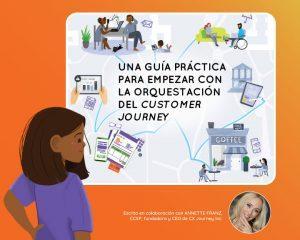Journey mapping vs. journey orchestration
Journey mapping is the vital first step that companies use to understand the customer experience. Provides customer-oriented information on how they view their experience with a brand. 63% of companies rely on journey maps
journey maps
to understand the customer experience. Other methods incorporate a data-driven approach to provide customers with an experience that delivers value while solving their problems. Journey mapping provides marketers and CX leaders with the tools they need to understand their customers’ journeys at all touchpoints.
Orchestration of the customer journey is about influencing the journey as it happens. Successful orchestration includes automating better experiences by understanding customer behavior in real time, intelligently interacting with relevant and highly personalized content, and delivering the best next actions to influence customer behavior.
It includes coordinating the elements of a situation to produce a desired effect or result. It meets an expectation that many customers have today: that their experience is not only seamless and consistent across all channels, but also relevant and personalized. It is vital that brands align the different parts of their customers’ experience to meet that expectation. To achieve this, journeys orchestration also brings together siloed cross-functional areas to work together and collaborate in the best interest of the client. It is this type of partnership within a brand that helps drive a true omnichannel strategy that is agile enough to adapt to customer expectations.
Orchestration of the journey is a success differentiator
Orchestration of the journey offers an important concept for brands: focus on journeys, not touchpoints. This is the mantra for customer experience success. As Forrester vice president Joana de Quintanilha says, “you can’t obsess about the customer without focusing on the journey.” While it is important to look at individual steps and touchpoints, moments of truth and channels of experience, it is more important to remember the entire experience the customer has with your brand. Focusing on the entire journey gives companies the ability to design and deliver an exceptional customer experience. Essentially, it is the commercial version of a marathon, not a sprint. Since the improvement of the
journe
y
increases overall customer satisfaction by 20%. Companies that can better influence the customer experience to meet customer expectations are more likely to reap the benefits of that improvement through increased sales and retention.
How customers and brands benefit from journey orchestration
Customers like personalized experiences, not just personalized to them as individuals, but also personalized in real time, as well as the fact that they are getting value, having their needs met and their problems solved, and seeing the results they expected. They also love the consistency of omnichannel experiences, which is demonstrated by the fact that 49% of customers have made impulse purchases simply to receive a great customer experience.
Brands, of course, also benefit. They are driving more effective and efficient engagement and building trust through real-time and responsive experience improvements, leading to new business, cross-sell and up-sell opportunities. They have broken down or connected organizational silos, which improves morale and eliminates not only inefficiencies, but also pain points for employee and customer experiences.
There is still a lot of work to be done to ensure that companies truly understand the importance of journey orchestration in delivering a great experience. Perhaps the most important thing to remember is that data and systems are the root of success. A platform or system specially designed to allow the client to achieve their results in a simple, consistent and customized way will be the key to success.
eBook
A practical guide to get started with customer journey orchestration
There is more to learn about journeys orchestration. Read this e-book to better understand how it can help you take customer experience to new levels.

Content extracted from Quadient.
